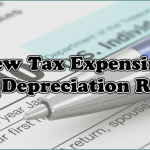
Tax day (April 15) is only about a month away, and that means millions of Americans will soon be getting their tax refunds. That’s good news for small business owners, since more spending money in consumers’ pockets means they’ll have more money to spend at your business … right?
Not necessarily. More consumers than ever are planning to save their tax refunds this year, according to the National Retail Federation’s annual Tax Returns Survey. Although almost two-thirds (65.5 percent) of survey respondents expect to receive a refund this year, nearly half (49.2 percent) say they’re going to save the money instead of spend it. More than one-third (34.9 percent) will use it to pay down debt.
The younger consumers are, the more likely they are to be savers. Some 57.3 percent of 18-to-24-year-olds expecting refunds will save the money, as will 52.3 percent of those aged 25 to 34 (while 45 percent of this age group plans to use their refunds to pay down debt).
So how can you encourage savings-minded consumers to part with some of their refunds at your business?
Tax Refund Marketing Ideas
Think Ahead
“Americans this year see refund season as a time to improve their financial health by using their refunds to get ahead on savings goals, pay down debt and plan for purchases in the future. Money saved is spending potential down the road,” said NRF President and CEO Matthew Shay in announcing the survey results.
Plant the seeds for future spending now by promoting big-ticket items that consumers may be contemplating, but not yet ready to purchase.
Appeal to Their Financial Concerns
With consumers in a saving frame of mind, emphasizing the value of your product or service in the long term can be a way to get them to spend. For example, do you provide a service that will enhance the value of their home, protect their financial assets or otherwise assist in their goals of building a nest egg? If so, promote how what you provide can help.
Consider Layaway
If you have a retail store, adding a layaway program can encourage customers to put some of their tax refunds toward a future purchase. The layaway trend has gathered steam over the past few holiday shopping seasons, but there’s no reason you can’t extend it to all year long. And because layaway requires only small payments over time, it may be more appealing to consumers who don’t want to blow their refund all at once or take on still more credit card debt.
Encourage Sensible Spending
After saving their refunds and paying down debt, the third-most popular plan consumers have for their refunds is to spend them on everyday expenses. In other words, they’re not going to swing out on fancy vacations or new cars, but they might use the money to cover “boring” but necessary purchases like getting the carpets cleaned or buying new shoes for the kids.
Marketing messages and promotions that spotlight these types of ordinary products and services can be effective at this time of year by making consumers feel good about spending their refunds on necessary expenses.
‘Tis the Season
After being trapped inside all winter, everyone feels the need to refresh their homes, wardrobes and looks for spring. Marketing that taps into people’s natural excitement about approaching spring can be very effective at getting customers to loosen up their pocketbooks. Don’t forget Easter and Mothers Day — encourage customers to spend their refunds on Mom or on a family Easter gathering.
Don’t Forget the Splurgers
Yes, there are still some Americans who will be using their tax refunds to have fun. About 12 percent say they will use the money to go on vacation, around 9 percent will buy something big like a new television or car, and about 8 percent will treat themselves to a spa, a salon visit or a fancy night out. Encourage customers to treat themselves to a big or small expenditure with messaging that emphasizes rewarding yourself, taking time off to relax or rejuvenating yourself.
Whatever method you choose to promote consumer spending and implement tax refund marketing — make your move quickly. The survey was conducted in early February, and at that time, nearly 85 percent of respondents had either already filed their taxes or planned to file by the end of March.
[“source-smallbiztrends”]




